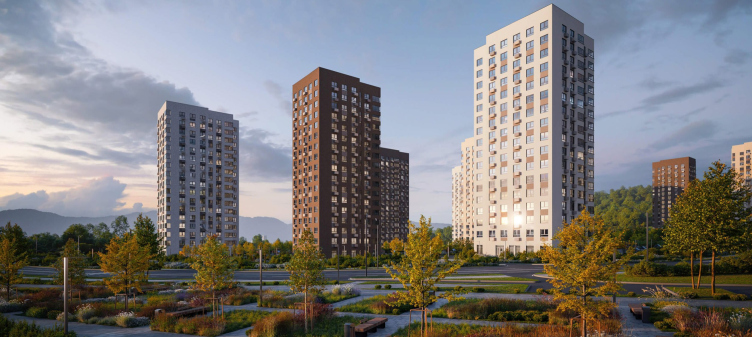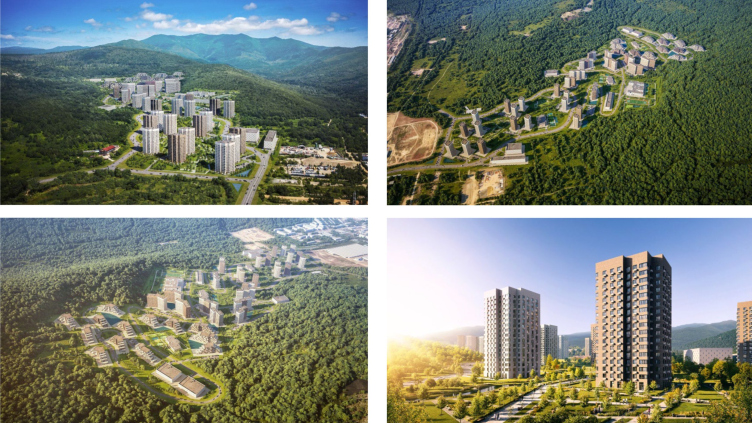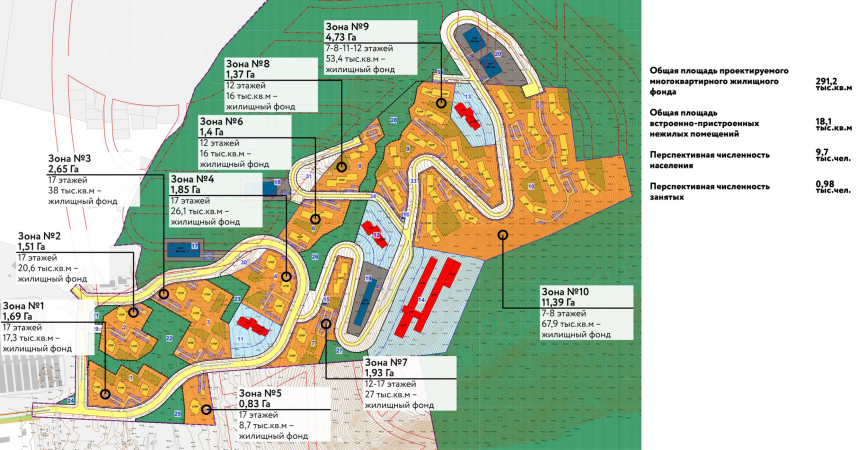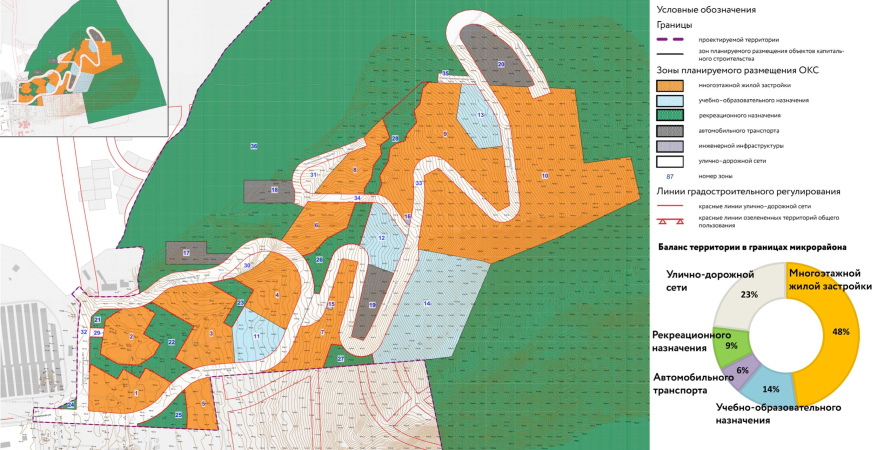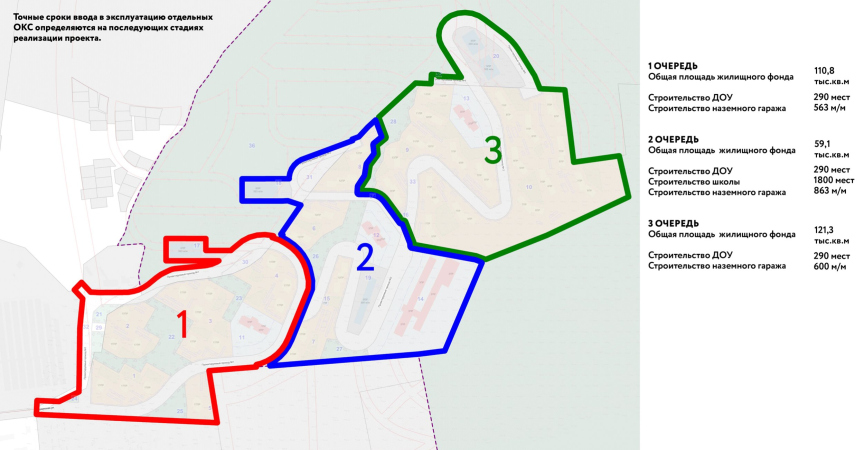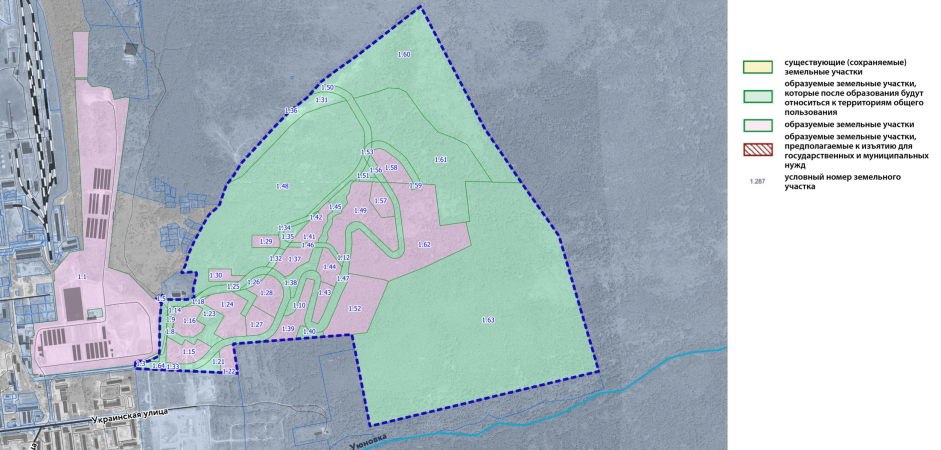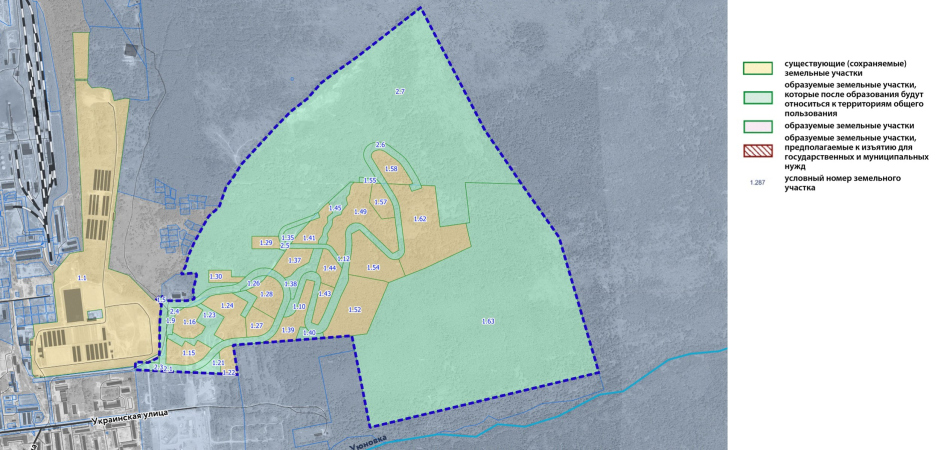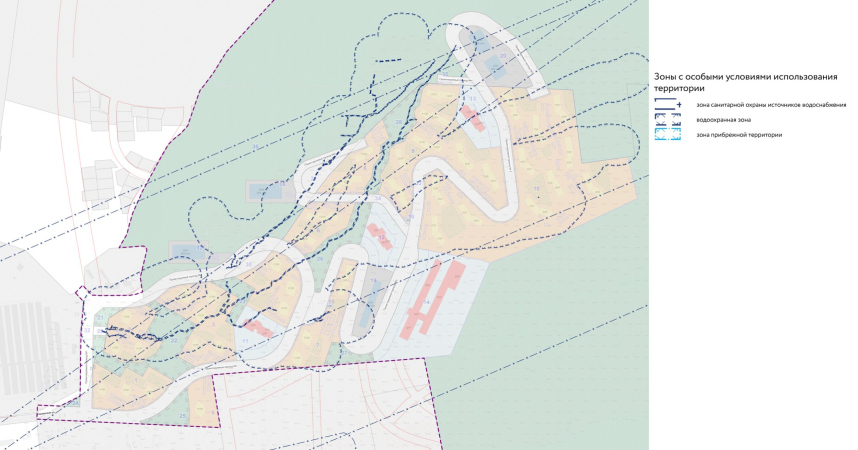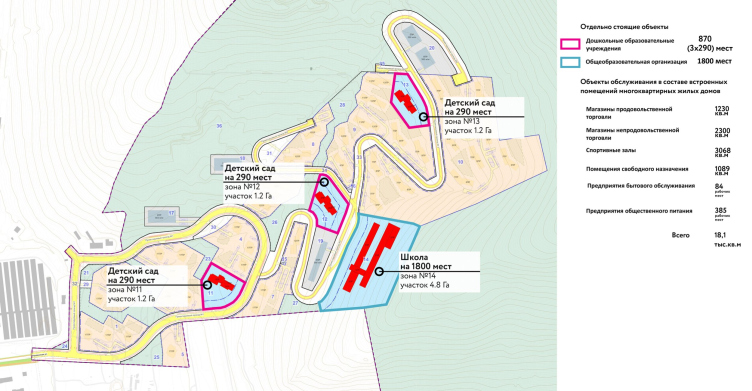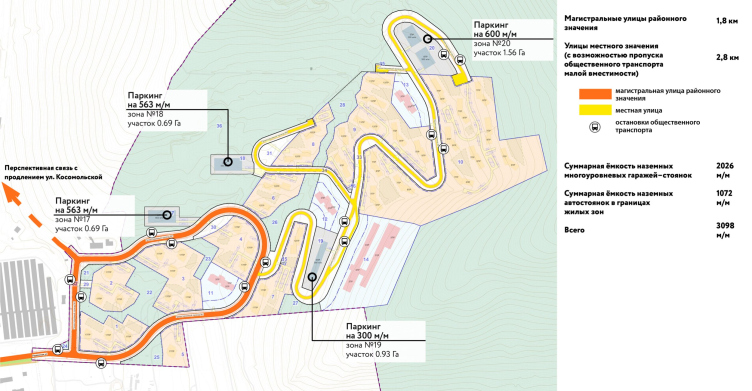Maxim Vikulin, the head of architectural and planning office
We worked on the master plan for the entire city and, thus, participated in all stages of designing the future area. We had a good understanding of the role of the location, as well as transportation, geological, and natural conditions. We had a comprehensive picture of the area that pointed to the opportunities and directions for development.
Uyun area
Copyright: © Genplan Institute of Moscow, PIK project
Yuzhno-Sakhalinsk is sandwiched between two mountain ranges and stretches from north to south. The micro-district “Uyun Park”, named after the nearby Uyunovka River, will be located on the city’s northeastern outskirts, where the urban environment gradually dissolves into industrial buildings, fences, and siding, and the plain gives way to forest-covered foothills. It is the natural and impressive beauty of these foothills that becomes the value that the authors of the project are focusing on.
Strangely enough, Uyun will become one of the few, and certainly the largest, complexes built on the relief in the city, with a significant elevation difference of 150 meters on the site. When the concept was still in the development stage, the client invited the Japanese bureau Kengo Kuma & Associates, which suggested grouping the houses into three tiers: the lowermost one was named “Forest Garden”, the middle one “Steps”, and the upper one “Stone Garden”.
Uyun area
Copyright: © Genplan Institute of Moscow, PIK project
The Genplan Institute of Moscow further fine-tuned the arrangement of the houses on these tiers, of which there will be just over 40, in accordance with the site’s limitations, including seismic activity, ground waters, possible landslides, and complex insolation. “Forest Garden” is located on the plain and consists of several clusters of towers 17 floors high. “Steps” consist of multi-sectional plate houses with 12 floors. “Stone Garden” consists of houses with a more complex silhouette and accents up to 12 floors high. Thus, as the relief height increases, the number of floors decreases, and the maximum number of apartments receives views of hills, valleys, forests, and the city.
Alexander Kotenkov, Genplan Institute of Moscow
The main challenge of this project was dealing with the complex natural conditions, the relief being the main one of them. Already at the stage of planning, issues related to vertical planning and engineering protection of the territory were thoroughly worked out. The planning structure of the block, due to the unique natural environment of Yuzhno-Sakhalinsk, turned out to be non-standard and not typical for the typology of the PIK Group development.
Each tier has a standalone kindergarten and a shared school with a stadium that can accommodate 1,800 students. The school building has the potential to become a significant landmark for the area: the 40-meter elevation difference on the selected site suggests a complex vertical layout that can result in an expressive architectural form. Whatever the outcome may be, the building’s integration into the relief and the absence of obstructive construction will allow children to have daily contact with a highly aesthetic environment: it will be enough to look out the window or play ball during the sports periods.
Uyun area
Copyright: © Genplan Institute of Moscow, PIK project
All the tiers are connected by a serpentine road, along which the architects place multi-level garages – underground parking lots would have been impractical and costly in such relief and hydrological conditions. Given the high level of motorization in Yuzhno-Sakhalinsk, where families often have two cars – one for the city and one for the countryside – and a limited number of open parking spaces, garages will be in demand among future residents. For the residents’ convenience, public transport stops are also provided and located at a comfortable distance.
Uyun area
Copyright: © Genplan Institute of Moscow, PIK project
The free placement of houses and the absence of thoroughfares leave space for extensive home territories. They flow into each other and form not the usual closed courtyards, but rather a unified park area that runs through the entire area from the lower to the upper levels. Originally, it was planned to preserve the stream located on the site so that it could become the axis of recreational space, but the idea had to be abandoned due to engineering safety considerations.
The relief of the area provides diverse landscaping opportunities – the architects plan to fill the “yards” with amphitheaters, terraces, hills, and climbing areas. Both active and quiet walking areas are envisaged, as well as places for work and sheltered spaces. Importantly, the environment is barrier-free – steps, thresholds, and curbs are absent or duplicated by ramps, and all inclines are based on norms oriented towards people with limited mobility. Bike paths will also be laid along the wide sidewalks. The network of cross-links will make it possible to shorten the distance.
Uyun area
Copyright: © Genplan Institute of Moscow, PIK project
The green framework of the area is connected to forest trails and routes that lead to hills, waterfalls, rivers, and other natural attractions. Going for a walk from home, in ten minutes one can find themselves in a beautiful and quite wild forest. This kind of leisure activity is familiar to city dwellers: hiking, trekking, and skiing are popular here.
The absence of large public facilities in the area is compensated by the “commercial contour” of the ground floors of the buildings and is explained by the scale of Yuzhno-Sakhalinsk: it takes 30 minutes to get to the airport, which is located at the opposite end of the city. In addition, the complex will undoubtedly give an impulse to the development of neighboring areas. Moreover, in accordance with the city’s master plan, a large investment project “Agropark” will be implemented on the adjacent territory, and recreational areas will appear, which will allow us to speak about a new multifunctional center of the city with jobs and points of attraction.
Uyun area
Copyright: © Genplan Institute of Moscow, PIK project


